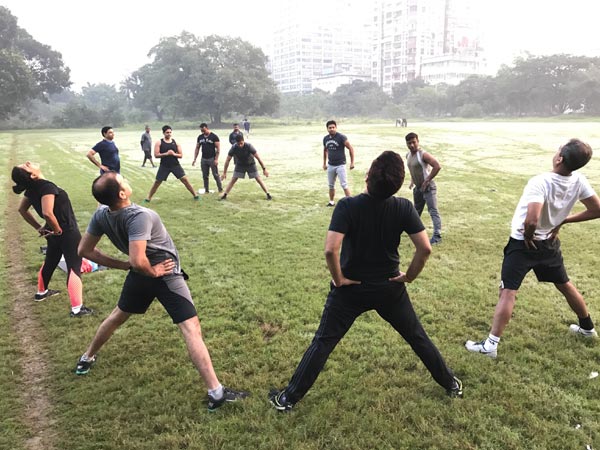
Can physical activity offset the health risks of too much sitting?study finds
Sydney, Apr 24 (IBNS): In findings that could relieve desk-bound office workers, a weekly dose of at least 150 minutes of physical activity could substantially reduce or offset the mortality risks in 'high sitters', University of Sydney research finds.
Sitting is often touted as ‘the new smoking’, but it is unclear if it is the sitting itself or the lack of physical activity that causes the harm. It has also been unclear what level of moderate to vigorous intensity physical activity – routine activities like walking briskly to work, as well as sport and exercises – might offset this risk.
New research has examined the associations of sitting and physical activitiy with premature death and cardiovascular disease mortality, and estimated what level of moderate to vigorous intensity physical activity might offset health risks of sitting.
The researchers statistically modelled physical activity and sitting against death records of nearly 150,000 study participants aged 45 years and over and followed up over almost nine years.
The study’s key message is that physical activity is particularly important for people who sit a lot. Reducing sitting would be a good start but is not enough: the most important lifestyle change for such people would be to look for or create opportunities to move more daily.
Replacing sitting with physical activity – but not standing – reduced mortality risk among ‘high sitters’, people who sit over six hours per day, said lead author Professor Emmanuel Stamatakis, from the University of Sydney’s Charles Perkins Centre and Prevention Research Collaboration in the School of Public Health.
“In our study, sitting time was associated consistently with both overall premature mortality and cardiovascular disease mortality in the least physically active groups – those doing under 150 minutes of moderate to vigorous intensity physical activity per week,” Professor Stamatakis said.
“For example, people who were physically inactive and sat for more than eight hours per day had 107 percent higher risk for cardiovascular death compared to those who did at least one hour physical activity per day and sat less than four hours.”
“But one hour of physical activity per day is not necessary."
"Meeting the Australian public health recommendation of 150 to 300 minutes per week – equivalent to around 20-40 minutes per day on average – appeared to eliminate sitting risks," Professor Emmanuel Stamatakis said.
Published today in leading cardiology publication the Journal of the American College of Cardiology, the study was a University of Sydney-led collaboration with the Norwegian School of Sport Sciences, Norwegian Institute of Public Health and the UK’s Loughborough University.
Physical activity doses equivalent to meeting the basic current recommendations –at least 150 minutes of moderate intensity or 75 minutes of vigorous intensity activity per week – were found to reduce or effectively eliminate associations between sitting and both cardiovascular and overall mortality risk.
Professor Stamatakis said the findings would be useful for public health officials, health care workers, but also people who sit a lot, such as workers in office-based and other sedentary jobs.
“Any movement is good for health but physical activity of moderate to vigorous intensity – that is activities that get people out of breath– is the most potent and most time-efficient,” Professor Stamatakis said.
“Exercise and sports are a great way to be active but are not the only way – walking fast, climbing stairs, and cycling to get from place to place are only some of the many opportunities everyday life offers to move and even ‘huff and puff’ sometimes.”
Support Our Journalism
We cannot do without you.. your contribution supports unbiased journalism
IBNS is not driven by any ism- not wokeism, not racism, not skewed secularism, not hyper right-wing or left liberal ideals, nor by any hardline religious beliefs or hyper nationalism. We want to serve you good old objective news, as they are. We do not judge or preach. We let people decide for themselves. We only try to present factual and well-sourced news.







